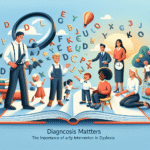The Ultimate Journey Through OCD: Understanding Your Mind and Finding Relief
Introduction
Imagine waking up every day with your thoughts spiraling out of control, consumed by doubts and intrusive ideas that feel impossible to shake. You are not alone. Obsessive-Compulsive Disorder (OCD) affects millions around the world, turning daily life into a battlefield between irrational fears and a seemingly insatiable need for control. In "The Journey Through OCD: Understanding Your Mind and Finding Relief," we will delve deep into this complex mental health challenge, uncovering insights, therapeutic methods, and real-life stories that inspire hope and resilience.
In today’s society, awareness of mental health issues has grown significantly, yet the nuances of OCD often remain misunderstood. This comprehensive article aims to demystify the condition, provide essential tools for managing it, and ultimately guide you on your personal journey toward finding relief.
The Nature of OCD
What is OCD?
At its core, OCD is characterized by two main components: obsessions and compulsions. Obsessions are intrusive thoughts, images, or urges that cause significant anxiety or distress. Compulsions, on the other hand, are repetitive behaviors or mental acts performed in response to obsessions or according to rigid rules. The relationship between these two components forms a vicious cycle that can be challenging to navigate.
Table 1: Distinguishing Symptoms of OCD
| Category | Description |
|---|---|
| Obsessions | Recurrent, unwanted thoughts that provoke anxiety |
| Compulsions | Behaviors or rituals performed to relieve the anxiety |
Obsession and Compulsion: The Feedback Loop
Consider Sarah’s story: A 28-year-old graphic designer, Sarah’s life started to crumble under the weight of her OCD. It began with an obsession about cleanliness—she feared that germs would harm her family. This led her to engage in compulsive washing rituals for hours each day. The more she washed her hands, the more her anxiety increased, requiring her to wash even more. This cycle is a hallmark of OCD and illustrates how quickly it can take control of one’s life.
Real-World Application: Navigating the Cycle
Understanding this cycle is crucial for anyone on "The Journey Through OCD: Understanding Your Mind and Finding Relief." By recognizing that obsessions and compulsions are interconnected, individuals can begin to break the cycle through targeted therapeutic approaches.
The Psychological Landscape of OCD
The Brain Behind the Disorder
Recent studies have shown that certain areas of the brain are significantly involved in OCD. Neuroimaging has revealed abnormalities in the orbitofrontal cortex, anterior cingulate cortex, and basal ganglia. These findings provide a biological basis for the disorder, helping to illustrate that OCD isn’t just a matter of "overthinking"—it has real mental and neurological components.
Understanding Triggers and Stressors
Identifying what triggers OCD symptoms is vital in "The Journey Through OCD: Understanding Your Mind and Finding Relief." Common triggers may include:
- Life transitions (moving, job changes)
- Stressful events (loss of a loved one, relationship issues)
- Major life decisions
Case Study: Take the case of John, a college student who developed OCD during his first year away from home. The stress of academic pressures triggered his obsessions about his academic performance, leading to compulsive studying and repeated checking of textbooks. By identifying this trigger, John was able to start addressing his compulsions.
Chart 1: Common OCD Triggers
| Trigger | Description |
|---|---|
| Life Transitions | Changes leading to increased anxiety |
| Stressful Events | Major life events causing emotional upheaval |
| Major Decisions | Uncertainty leading to obsessive thoughts |
Therapeutic Interventions
Cognitive-Behavioral Therapy (CBT)
CBT has been proven effective for treating OCD, especially a specific type known as Exposure and Response Prevention (ERP). This method involves gradually exposing oneself to the source of anxiety while preventing the accompanying compulsive response.
Case Study: Maria, a 33-year-old therapist, participated in a structured ERP program. Over several weeks, she learned to confront her fears about contamination through gradual exposure, significantly decreasing her compulsive behaviors. Her experience illustrates how effective structured exposure can be.
Mindfulness and Acceptance Strategies
Mindfulness techniques can complement traditional therapies, helping individuals observe their thoughts without judgment. This can be particularly empowering on "The Journey Through OCD: Understanding Your Mind and Finding Relief."
Summary of Mindfulness Techniques:
- Breath Awareness: Focusing on breathing to calm the mind.
- Body Scans: Tuning into sensations to ground oneself.
- Thought Observation: Recognizing thoughts as temporary rather than absolute truths.
Medication
In some cases, medication may be necessary alongside therapy. Selective Serotonin Reuptake Inhibitors (SSRIs) have shown success in managing symptoms for many individuals. It is crucial to consult a qualified healthcare professional to tailor a treatment plan suitable for you.
Real Stories of Recovery
Finding Hope: Testimonials from Individuals with OCD
Example 1: Emily’s Journey
Emily, a 25-year-old artist, candidly shares her transformation. After years of battling debilitating OCD, she found a breakthrough through group therapy. She discovered that sharing her experiences with others created a supportive community that helped dismantle her shame and led to significant relief.
Example 2: Michael’s Commitment to Change
At 40, Michael learned to navigate his OCD through commitment and perseverance. By adopting habits from CBT and mindfulness practices, he now shares his story through public speaking, aiming to educate others on mental health.
Learning from Others
These real-life stories serve as beacons of hope. They remind us that while the journey may be arduous, relief is possible, and finding your way through OCD does not have to be done alone.
Conclusion
The journey through OCD is deeply personal, filled with twists and turns, but it can also be transformative. Through understanding, therapeutic interventions, and community support, individuals can find pathways to relief. Recognizing that one’s thoughts do not define who they are is a powerful step toward recovery.
As you navigate your own journey, remember to take small steps, reach out for help, and celebrate your progress—no matter how incremental it seems. Ultimately, everyone’s path will look different, but the goal remains the same: to reclaim your life from OCD.
Actionable Insights
- Track Your Triggers: Keeping a journal can help you identify patterns.
- Practice Mindfulness Daily: Dedicate time each day to mindfulness exercises.
- Seek Professional Help: Don’t hesitate to connect with a therapist specializing in OCD.
- Join Support Groups: Find solace in community and shared experiences.
FAQs Section
1. What causes OCD?
OCD can have various contributing factors, including genetic predisposition, neurological differences, and environmental stressors. Understanding these can aid in therapy.
2. Can OCD be cured?
While there may not be a definitive cure, many individuals experience significant relief through therapy and lifestyle changes.
3. How do I know if I have OCD?
If you find that intrusive thoughts and compulsive behaviors significantly interfere with your daily activities or cause distress, it’s essential to consult a mental health professional for a proper assessment.
4. Is medication necessary for OCD?
Not everyone with OCD requires medication; therapy can be highly effective. However, a healthcare professional can help determine the best course of action for individual cases.
5. What are some self-help strategies for managing OCD?
Self-help strategies include mindfulness practices, maintaining a journal, and gradually confronting fears without resorting to compulsive behaviors.
By embracing "The Journey Through OCD: Understanding Your Mind and Finding Relief," you are taking a crucial step towards transforming your relationship with your thoughts and finding the peace you deserve. Remember, you are not alone on this journey.















